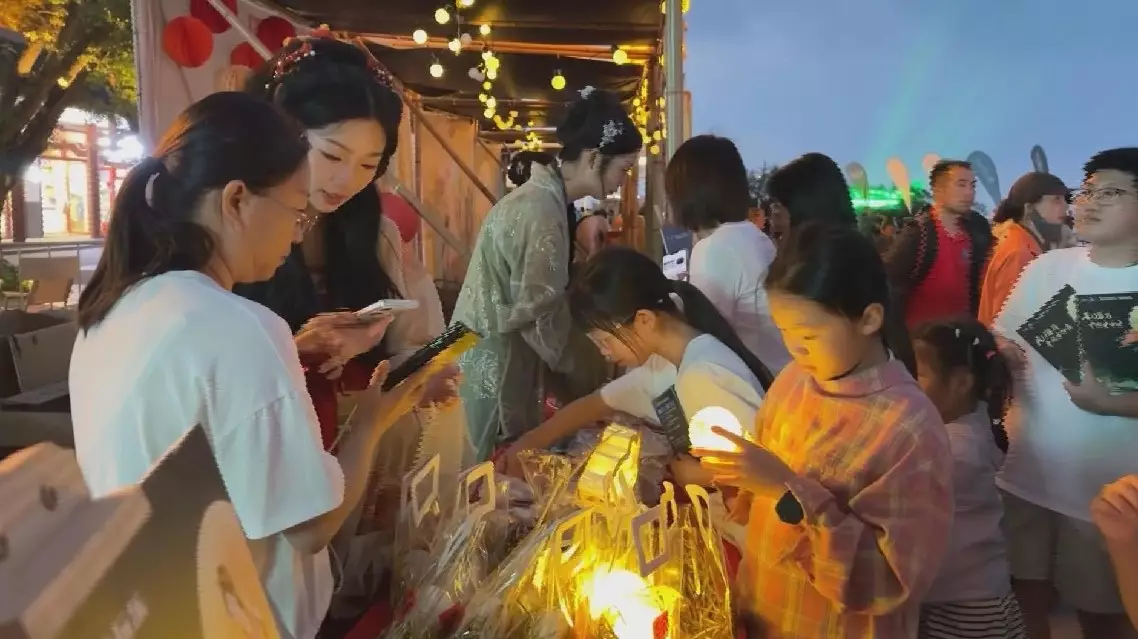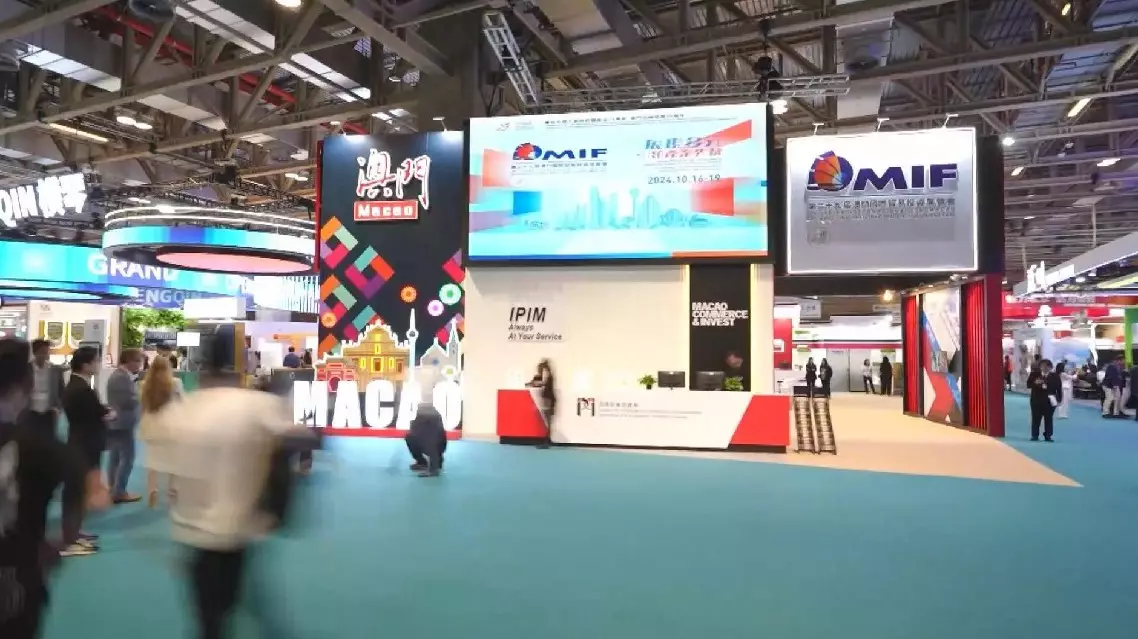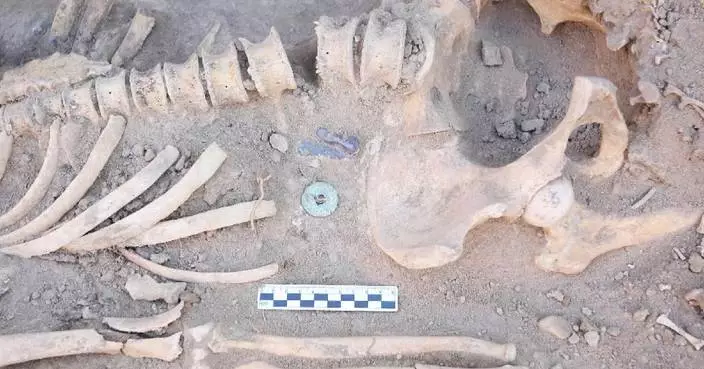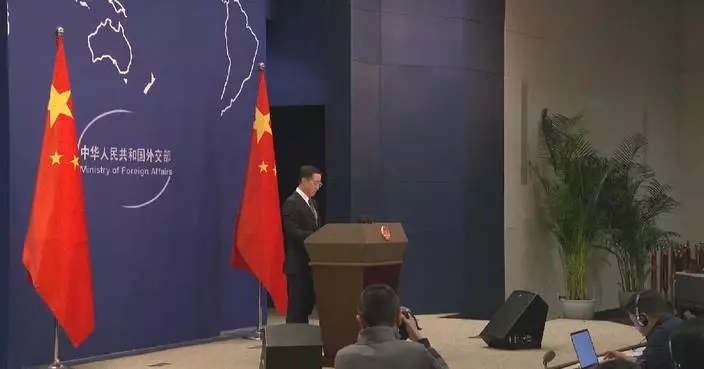Museums and scenic spots across China are introducing innovative activities to celebrate the Mid-Autumn Festival, allowing visitors to savor traditional culture and share festive moments with their family members.
The festival, which lands on Tuesday this year, is one of the most important annual traditions in China and is a time for family reunions, appreciating the full moon, lighting lanterns, and sharing the holiday pastry of mooncakes.
In Luoyang City of central China's Henan province, museums have extended their opening hours, and introduced refreshing educational activities for families to enjoy together.
Many have taken the chance to experience more Chinese history and culture during the holiday period, with visitors saying they were pleased to gain more deep historical insights through the exhibitions.
"The docent's introduction revealed to me many fascinating stories behind the cultural relics and during the excavation, which made history more tangible for me. For our younger generations, only through understanding our history better can we strengthen our cultural confidence and inherit the fine elements of Chinese culture," said Chen Jia'er, a visitor.
Museum staff are also holding special events and have brought in additional help to meet the increased holiday demand.
"We launched enameled glass night lamp event in Luoyang Museum, titled 'Meet the Goddess of Moon Palace,' for children and parents to explore the culture and tradition of Mid-Autumn Festival together. During the festival, we also added extra shifts for docents and volunteers to deliver a better cultural experience to visitors," said Li Chenfei, the deputy head of the social education department of Luoyang Museum.
In Zhangjiajie City of the central Hunan Province, a blend of Mid-Autumn traditions, festival mythology, and modern sports brought visitors an innovative experience. In addition to various performances of traditional arts, China's mythical ancient moon goddess Chang'e, the protagonist of Mid-Autumn mythology, made an appearance in the Tianmen Mountain scenic area, with a daring arrival on a hot-air balloon, with paragliders escorting the actor portraying her.
"We saw a real Chang'e flying to the moon. It perfectly captures the Mid-Autumn atmosphere, and helped us tourists, who are far away from our hometown, to feel the warmth and unity of the festival," said a tourist from south China's Fujian Province surnamed Chen.
"It is quite eye-opening. The fusion of traditional culture and extreme sports is special," said a local visitor surnamed Jiang.

Museums, scenic spots introduce Innovative activities to celebrate Mid-Autumn Festival
Macao has been emerging as a global hub for conventions and exhibitions in recent years by exploring the enormous opportunities in the sector, driving the region to advance its economic diversification and embrace a brighter future.
Macao has received many awards this year, such as the Best Convention City (Asia) and the Best BT-MICE City, showcasing the recognition for and influence of Macao's exhibition industry.
More than 1,000 electronic game enthusiasts from all over the world gathered recently in Macao to participate in a esports themed event.
Su Zhili, organizer of the event, said that Macao's rich experience in hosting large-scale events, coupled with its good infrastructure, has driven him to choose the region as an ideal destination to hold such an activity.
"Macao has held many similar large-scale events. It has rich experience, and the facilities at the venue are relatively mature, so we can start our work comfortably," said Su.
During the first three quarters of 2024, Macao held more than 1,000 conferences and exhibitions in total.
"We will invite more professional, special conferences to be held in Macao and also cultivate more exhibition brands with international influence in Macao, so as to promote Macao's exhibitions to be more market-oriented, professional, international, digital and greener from various aspects. This is our goal," said Elaine Wong, member of the Macao Commerce and Investment Promotion Institute.
In addition, multiple large exhibitions and conferences, such as the Macao International Trade and Investment fair, the Macao Franchise Expo, and the International Infrastructure Investment and Construction Forum, are held regularly in Macao.
With the introduction of a series of policies and measures to facilitate the exchanges between the mainland and Macao, as well as the construction and development of the Guangdong-Hong Kong-Macao Greater Bay Area and the Guangdong-Macao In-Depth Cooperation Zone in Hengqin, Macao's convention and exhibition industry will embrace more opportunities for development in the foreseeable future.
"We have such a good industrial base in the Greater Bay Area. The mode of 'Convention and Exhibition + Industry' not only integrates the industries of Macao, but also the industries of the Greater Bay Area. In addition, Macao actively integrates into the national development and plays a role in the Belt and Road. Why are we so confident in Macao's convention and exhibition sector? Because it is backed by the motherland, and the country gives Macao great support," said Alan Ho, chairman of the Macao Association of Convention, Exhibition and Tourism Sectors.

Macao emerges as global hub for conventions and exhibitions, driving economic diversification and international recognition










